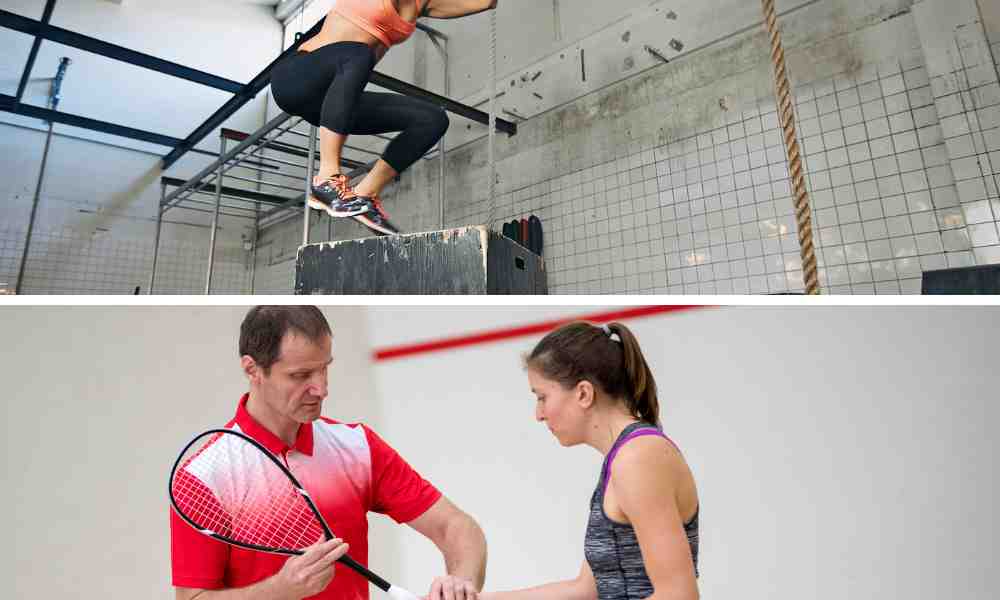
Squash is an exhilarating sport that demands agility, speed, and endurance. While honing your skills on the court is essential, incorporating gym workouts into your training regimen can take your squash game to the next level. In this blog, we’ll delve into some key gym workouts tailored for squash players.
1. Cardiovascular Fitness:
Squash is a high-intensity sport that requires quick movements and sustained bursts of energy. To improve your cardiovascular endurance, engage in aerobic exercises like running, cycling, or using the elliptical trainer (cross-trainer). Aim for at least 30 minutes of cardio workouts 3-4 times a week. This will help you maintain your energy levels throughout a match.
2. Leg Strength and Power:
The explosive movements and quick changes in direction in squash put a significant strain on your leg muscles. Strengthening your legs is crucial for stability and power on the court. Incorporate exercises like squats, lunges, and leg press into your gym routine. These will help you move swiftly and generate power in your shots. Power can also be enhanced with the use of weighted step ups (using the step boxes).
3. Core Stability:
A strong core is essential for balance and control in squash. Exercises like planks, Russian twists, and medicine ball throws can help you develop a stable core. A strong core not only enhances your ability to twist and turn on the court but also helps protect your spine from injury during intense rallies.
4. Upper Body Strength:
Your arms and shoulders play a pivotal role in controlling the ball and executing shots accurately. Incorporate exercises like press-ups, pull-ups, and shoulder presses to build strength in your upper body. A strong upper body will enable you to maintain control over your shots and execute powerful serves.
5. Agility and Quickness:
Squash requires rapid changes o direction and quick reflexes. Agility ladder drills, cone drills, and plyometric exercises like box jumps can improve your agility and quickness. These drills will help you move efficiently on the court, respond to your opponent’s shots swiftly, and retrieve difficult balls.
6. Flexibility and Mobility:
Don’t underestimate the importance of flexibility and mobility in squash. Regular stretching and yoga can improve your range of motion, making it easier to reach for those challenging shots. Flexible muscles and joints also reduce the risk of injuries.
7. Sport-Specific Drills:
Consider working with a squash coach or a fitness trainer who specializes in squash-specific workouts. They can tailor your gym routine to address your unique needs as a squash player. This might include drills that mimic squash movements and help you develop game-specific skills.
8. Rest and Recovery:
Lastly, remember that rest and recovery are integral parts of any training programme. Overtraining can lead to injuries and burnout. Ensure you get adequate sleep, stay hydrated, and allow your body time to recover between intense training sessions.
Incorporating these gym workouts into your squash training plan can significantly enhance your performance on the court. A well-rounded fitness routine that combines cardiovascular conditioning, strength training, agility drills, and flexibility work can make you a formidable opponent in squash.
In conclusion, squash is a dynamic sport that demands both physical and mental prowess. To excel in this sport, it’s essential to supplement your on-court practice with effective gym workouts. These workouts will not only improve your physical fitness but also boost your confidence and endurance during intense squash matches. So, hit the gym, refine your skills, and get ready to dominate the squash court!
I hope you find these gym workout tips beneficial for enhancing your squash game. If you have any specific questions or need further guidance, please feel free to ask Steve in the gym or Craig (the squash coach).
